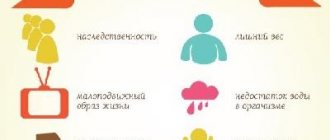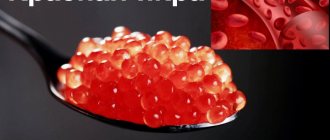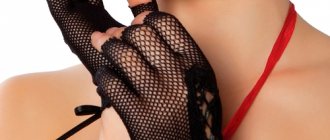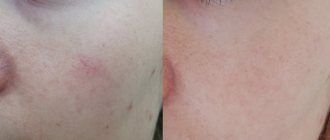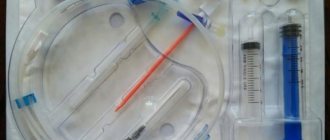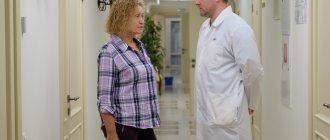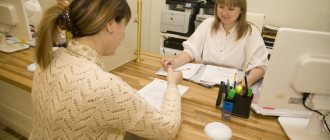Spider veins are veins visible under the skin.
Spider veins are dilated superficial veins that form a mesh under the skin. Although individual mesh veins are only a few millimeters long, together they can cover a significant portion of the leg. Small spider veins are bright red in color. As they increase in size, they acquire a blue tint.
What causes spider veins to form?
Spider veins are considered a form of varicose veins. The reasons for their development are the same:
- With age, the walls of the veins weaken.
- Due to the disruption of blood return to the heart, blood stagnation develops in the legs.
It is believed that about half the population suffers from spider veins. Women suffer from this disease more often than men. The reason for the weakening of the vascular wall and the formation of spider veins is a violation of the formation of connective tissue. Sometimes this condition is hereditary.
Spider veins at a young age: An alarm signal
In recent years, spider veins often appear in patients aged about 20 years. Later, with age, varicose veins, swelling and skin changes develop. In the most severe cases, venous ulcers develop as a result of chronic venous insufficiency. Patients with venous disease are also at increased risk of developing venous thrombosis.
Venous network on the legs, how to treat it?
14.10.2019
It is important for every woman to monitor and care for her legs , as they are a source of admiration for men.
Most women prefer to hide spider veins on their legs by wearing thick tights in winter, and in summer they apply foundation with a thick texture or liquid tights their legs With such methods of camouflage, the legs look very good.
However, vascular network is not just an aesthetic problem, but the beginning of a serious illness and circulatory disorders. Varicose veins are characterized by stagnation of blood in the lower extremities and dilation of blood vessels . The problem may arise due to prolonged sedentary work or, conversely, long standing in one position. Over time, varicose distort the veins , they become wide and bulge under the skin, often the veins expand to very large sizes. As the disease progresses, the legs begin to swell and hurt. If the disease is not treated , inflammation will occur, which will require medical attention.
Such symptoms cannot be ignored; the vascular network on the legs foot care , to reduce the load, because varicose veins cannot be ignored.
Options for getting rid of venous mesh
Any disease can be easily cured in the early stages, which is why it is so important to start therapy when the first symptoms appear. If spider veins have already appeared, you need to change or adjust your lifestyle.
First of all, you need to give up bad habits, because they aggravate the course of the disease, for example, nicotine affects blood vessels and causes spasm; the vessels will not withstand such a load in the future and will begin to deform. It is also necessary to moderate physical activity or, conversely, put stress on your legs . The most common problem is a sedentary lifestyle, for such a problem you should do light physical exercise. This type of exercise can be done without getting up from your seat. Another method of prevention is wearing comfortable shoes. It is necessary to wear shoes that do not interfere with blood circulation, such as low-heeled shoes. You also need to eat right, monitor your diet and be sure to add vitamins and minerals to it.
The above tips serve as prevention methods and to eliminate the symptoms of mild forms of spider veins; more advanced forms of the disease require serious treatment methods.
Effective treatments
In severe cases of the disease, you should consult a phlebologist to determine treatment.
The doctor will prescribe medications that improve the walls of blood vessels .
Often, when inflammation occurs, doctors recommend anti-inflammatory ointments. Special medications are also prescribed to prevent blood clots.
The most effective and efficient methods of getting rid of venous mesh are procedures such as:
- ozone therapy. With this method of exposure, dilated vessels are glued together by ozone introduced under the skin;
- laser treatment. Venous patterns are removed from the laser, the laser seals the vessel , and after a while it resolves.
Published in Phlebology Premium Clinic
Risk factors
Risk factors for developing spider veins are comparable to risk factors for developing varicose veins. There are both factors controlled by the patient and factors that he cannot influence:
Factors that cannot be influenced:
- age-related venous dysfunction,
- Hereditary predisposition
- Hormonal levels, for example, during pregnancy.
Factors that can be influenced:
- professions involving standing or sedentary work,
- overweight,
- alcohol consumption
- tight clothes and high heels.
A healthy lifestyle will help your feet look good.
Symptoms
The disease can develop very slowly: years or even decades. The symptoms of the initial stage are varied, but for convenience they are combined into a certain complex under the general feeling of heaviness in the legs:
- fatigue in the legs without serious exercise,
- sore veins,
- night cramps in the calves,
- pulling sensation in legs.
If you do not track the symptoms of varicose veins at the initial stage, the vein will become more and more deformed. In the evenings, swelling in the feet and ankles will begin to appear, disappearing by morning; Spider veins will become visible, and then swollen veins and nodules on them will be felt. If you do not consult a specialist at this stage, then in addition to the obvious decrease in quality of life and obvious pain, the person risks getting skin pigmentation and trophic ulcers. The further course of varicose veins brings complications such as bleeding from the venous nodes and the risk of developing such a serious disease as thrombosis, which can be fatal without contacting a specialist.
Prevention of spider veins
The most effective way to prevent spider veins is to minimize the risk factors mentioned above. Take responsibility for the health of your feet. These tips will help you with this:
- Exercises: Lying down and walking is better than sitting and standing: Move as much as possible and change your body position more often.
- Exercise: Schedule regular 10-minute exercise sessions throughout the day.
- Healthy Eating: Eat a light, balanced diet.
- Body weight: Control your body weight.
- Clothing: Wear loose, comfortable clothing...
- Shoes: Choose comfortable shoes with flat soles.
- Shower: Rinse your feet with cold water regularly. Also, a contrast shower strengthens connective tissues.
How are spider veins treated?
As a rule, spider veins are harmless and are mainly a cosmetic defect, since the affected areas of the skin may look like bruises. There are various ways to remove them:
- Laser therapy
- Sclerotherapy
What happens if spider veins are left untreated?
If spider veins remain superficial, blood circulation is not impaired. In most cases, spider veins do not cause any symptoms, so there is no need to treat them.
Sometimes spider veins can spread over a large area. This may cause pain.
Spider veins can also be a visible sign of disease in deeper, larger veins.
Spider veins that form below the medial malleolus are usually the first sign of chronic venous stasis and require treatment. That is why for early diagnosis of severe vein diseases, people with spider veins should be seen by a doctor.
medi products
Follow this link to find more information on medi compression stockings.
Compression garments
The human body
How does blood flow to the heart
Venous system
Product Tips
Ideal compression product
Compression hosiery
The era of Red Vienna and the architecture of “social utopia”
The era of Red Vienna did not last long - from 1919 to 1934, but it changed the face of the city and left behind numerous monuments made of stone and concrete, the most famous of which is the Karl-Marx-Hof (Karl Marx's courtyard) - the longest residential building in the world ( almost 1.2 kilometers). It is part of Vienna's municipal housing stock.
It is simply impossible to find a point on the ground to photograph the entire length of this gigantic building. Karl-Marx-Hof (hereinafter abbreviated as KMH) extends over several blocks, with four streets running “through” it.
The complex consists of several adjacent residential buildings and courtyards, at the end of each of which there are various infrastructure facilities.
A LITTLE HISTORY
As a result of elections to the Vienna City Council in 1919, the Social Democrats came to power in the capital. And although the rest of Austria remained “black” (under the leadership of the Christian Social Party), the “reds” decided to begin building socialism in one particular city. Attention: by “red” we mean social democrats, not communists (the latter have never been in power in Austria). The socialists considered their main task to be improving the lives of the working population. Projects in the social sphere that were successfully implemented during the era of Red Vienna include the introduction of free medical care in the capital, the creation of a network of kindergartens, women's and children's clinics, public sports facilities, baths, and shelters. The schools were additionally equipped with a medical center and a canteen where milk was distributed free of charge. Each newborn was given a bag of diapers from the municipality, “so that no more Viennese children will be wrapped in newspapers.”
One of the socialists' highest priorities was solving the housing problem in the city. The housing situation after the First World War acquired simply catastrophic proportions. Hundreds of thousands of Viennese from the poor lived in overcrowded tenement houses, often in unsanitary conditions. Tuberculosis was the most common thing and was popularly called “Vienna disease”. The situation was further aggravated by the fact that masses of refugees from the former regions of Austria-Hungary poured into the city (as we remember, in 1918, Austria, which once occupied half of Europe, “shrank” territorially to its current size). People huddled in barracks and basements... The socialists did not condense or evict the bourgeoisie from their houses and apartments. They decided to build “ideal homes” for workers. To raise funds for construction, the “red” authorities introduced an additional tax - the so-called “luxury tax”. Elements of luxury included having a servant, own car, riding horse, villa, visiting expensive restaurants, cabarets, brothels, buying furs, caviar, champagne, etc. The motto of those years was “The rich must pay!” In this way, about 60% of the funds for social projects were collected. The era of Red Vienna is a time of grandiose construction projects throughout the city. Construction provided many jobs. In total, during this period, about 65 thousand municipal apartments were commissioned and about a quarter of a million working Viennese were provided with housing. The era of Red Vienna testified that the implementation of the dictatorship of the proletariat was possible in a more or less democratic way. The rest of Austria looked warily towards Vienna - the “hotbed of the red infection” (which ultimately ended in the Civil War of 1934). Construction of the KMH, the most famous building of that era, lasted three years. When the complex opened in 1930, it contained 1,392 apartments for approximately 5,500 residents. Currently, the number of apartments in KMH has decreased, since many of them have been consolidated. The large length of the KMH is primarily due to the shape of the land plot, which the Vienna municipality acquired ownership for development. It was based on its shape that the architect En implemented his plan. It turned out to be a “city within a city” with its own infrastructure: a laundry, a bathhouse, two kindergartens, doctors’ offices, shops, a post office... KMH gave the impression of a medieval fortress, which with its gigantic size symbolized the triumph of the labor movement. The blue "pipes" at the top of the building are flagpoles for national flags that are flown on May 1st and Independence Day. The pretentious style of KMH embodies a certain idea of a commune, an ideal home for the working class. The average apartment area was 40 square meters. m (the largest had an area of 60 sq. m). It consisted of two rooms, a kitchen and a toilet. An innovation of that time was that the kitchen was moved to a separate room. Before this, in the apartments of the Viennese poor, the kitchen was most often located in the corridor, right at the entrance, and was ventilated through the open front door.
For financial reasons, the original version did not provide bathrooms for each apartment. Instead, in the KMH courtyard there was a public bathhouse with 60 showers and 20 baths. Then many residents installed shower cabins in their apartments themselves. It was only during the general renovation of KMH in the 80s that each apartment received a separate bathroom. The rent for municipal housing should not exceed 10% of the worker’s income. In case of illness or unemployment of the tenant, its amount was significantly reduced. In front of the main façade of KMH is the Square of February 12th, it is named after the tragic events of 1934, when during the Civil War, hundreds of workers barricaded themselves in various municipal residential buildings of the city, fighting with the “black” police and army. The forces were unequal, almost all of the rebels died or were executed. A memorial plaque was installed on the building of the complex in memory of those tragic events. Defeat in the Civil War of 1934 marked the end of the Red Vienna era. The dictatorship of the “estate state” came to power, representing the interests of the bourgeoisie and landowners. The new era lasted 4 years - until 1938, when the Nazis came to power in Austria. Under them, no social housing was built. With the arrival of the Nazis, the “non-Aryan” residents were evicted from the KMH and subsequently became victims of the Holocaust. There is a memorial plaque with their names on the building of the complex. Then KMH was renamed and received its name back only in 1945. The social construction program in the Austrian capital was continued in the 50s and is still ongoing.
OTHER EXAMPLES OF BUILDINGS FROM THE RED VIENNA ERA
Another symbol of that period is the Reumann-Hof (Reumann's courtyard). It is named after Jakob Reumann, the mayor of the city during the Red Vienna era. The style in which the building was built is also called “social utopian architecture.”
Of course, not all residential buildings from the time of Red Vienna are of the scale of Karl-Marx-Hof and Reumann-Hof. Most of the buildings of that era are less pretentious, but the area of the apartments and the quality of housing in all of them are approximately the same. Many buildings from the Red Vienna period contain elements of Art Nouveau. And this is not surprising, because the architects of these buildings were students of the famous Otto Wagner, the “standard bearer” of modernism in architecture. And finally, I want to mention another house from the times of Red Vienna, which I really like for its mystical-fairy-tale style and frescoes. It is called "Vogelweidhof" (Vogelweide's court - after the famous minstrel in the early Middle Ages), popularly called the "Fairytale Court".
Natalya Skubilova Photos selected by the author
